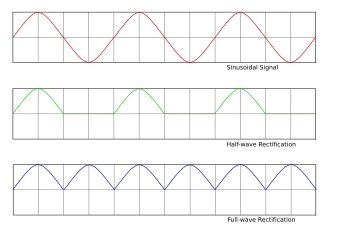From: What is the diode doing there?
I too have issues with the diode in a resonant circuit. I cannot get resonance in a simulator with it, unless I use a Zener Diode, and then I wonder if we are looking for a diode with a 20MV rating?
But, the diagram reminds me of this:
Flyback ConverterI am also interested in 3 other issues brought up recently:
1) Coating the the tubes to add some insulation, maybe reduce the speed at which current can be passed.
I WILL test this by next week. I intend to get some paraffin wax heat it on the grill and drop my tubes into it.
(Just for one of my tubes), I will then COMPARE the output to my other tubes using the same voltage/current (just frequency driven)
2) Is it a capacitor or a resistor? Interesting. Considering it pushed current back after I turned off an unprotected power amplifier, and ruined the amplifier, I would say it most definitely acts like a capacitor. But it might be worth thinking through that side of it a bit more. (My next point)
3) The inductors can easily overwhelm the capacitor. When it does, no current flows. I get *nothing*. Right now, I have a 10:1 transformer, and if I hook it up, it powers a light, and gives me 106V from 12V square pulsing. But the minute I put a single tube on this thing. I get nothing. There is barely enough power to light the light (which I kept there one time). And that reminded me, everything on the secondary side of a transformer MUST DRAW current or you get none. That capacitor acts like an OPEN circuit until it charges and at low frequencies. At high frequencies it acts like a short. I have MANY tests confirming this. The higher the frequency, the greater the current draw (without a vic).
If I use a hand made 0.352mH inductor. I get a noticeable drop in current draw. And I can scope the results a bit, and I know when I am going to start drawing current. And that is when the inductor is overwhelmed by the frequency and the capacitor is now controlling the draw of current by being a short. I am able to produce HHO at these restricted values (13.8V driving voltage, and pulling 0.65A but it is FAIR production. I wish I had a way to quantify. (Kinda the next stage for me).
So, I repeat what Russ is saying. Don't give up. Others point out that we are learning and understanding. Lets certainly see if we can break off some groups to test some thesis. I believe that the inductors being used are way to large for the size of the capacitors (of course EVERYONES got different capacitors). And I have had NO LUCK pushing 12V @ 3 AMPS through a 10:1 transformer and making any bubbles (the MOSFET got hot!)... Assuming I had 120V @ .3 Amps, I would have guessed that it would have worked. I let it run until the FET got hot. I was getting a LOT of inductance pushback (impedance).
HTH,
Kirk Out!
i back to read birth of new tech book again,i found good things in wfc hydrogen gas management system.
about delrin, constant voltage across cell, pulse frequency, gate frequency, resonant of water molecule, longitudinal wave ,resonant action, ionization ,insulated housing ... etc. i never read it clearly,fast read and not interesting cause that is advance(i just need to know a basic).we must read it again!!!!
- about electrostatic filter assembly unit(440,figure 3-45)=purify water to delrin wfc.notice that pure water only to process resonant action in resonant cavity. read in section;Impurity Extraction Process!!!!!
---------------------------------
to Faisca,
diagram for only 8xa,9xb circuit??vic 5 coils don't have bifilar cause low capacitance???
thanks
geenee
This V.I.C. 5 reels, many of us replicate without success, I see no chance of working, it is just a transformer, low income, with three secondaries connected in series with a diode, one of the secondary (called the choke) is turned upside down, the what does that cancel was induced in the other, then leaving only the product of a single secondary. It makes no sense, seems intentional disinformation.
Faisca,
Agreed there is something fishy here, but not sure what. Here are some observations.
1) We use the VIC and the B+ and B- are wired to make it a 30:1 step up transformer, but with B- and B+ Supposedly being 180 degrees out of phase. Tony did a video, see this
Tony Explaining WaveForm from the VICBut my concern is where he drew in the ZERO line. Something is wrong. These should be Positive Pulses, not AC Sine Waves. Although an Inductor will do that the a positive pulse, but it does not always take it to +/- the same values (Zero can be below the wave since it is DC).
2) Why work so hard stepping up the voltage if it is RESONANCE at work???? (If we can take the 300V and step it up to 3KV and 3MV even, why are we working so hard to step up 12V to 300V?) Is this to overcome the diode? Or is the circuit designed like a Tesla Coil or Flyback Converter, where we need to have the ENTIRE circuit have its own LOOP of wire to operate in.
I feel we are getting very close. I always thought that Stan discovered a way to cause Dielectric Breakdown by overwhelming the medium with a very large E-Field.
